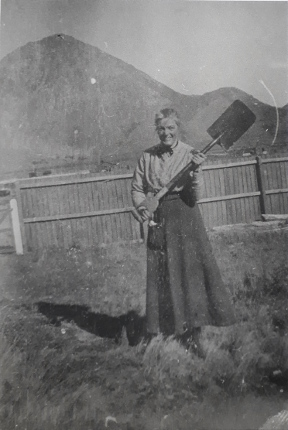Elizabeth Herriott

Botanist (1882-1936)
Pioneer botanist Elizabeth Herriott was the first woman to be appointed to the teaching staff at Canterbury University College.1 She completed her Masters thesis in 1905, presenting the anatomical leaf structure of plants from New Zealand’s sub-antarctic islands. These had been brought back live in 1903 and established in gardens by botanist Leonard Cockayne.2
Herriott turned to school teaching for a number of years. The First World War, however, opened up opportunities for women in science and university teaching. In 1916, Herriott was employed in Canterbury University College’s biology department as an assistant lecturer. She resumed research, keeping Lepidurus (tadpole shrimps) in the lab for several weeks and observing their habits in order to determine the number of different species. Herriott published two other papers, one on New Zealand’s giant kelp and the other, perhaps her most important work, detailing the botanical history of Christchurch’s Hagley Park. Herriott was promoted to lecturer in 1928, and kept that position until she retired in 1934.
References:
1. ‘NZBotSoc No 48 June 1997 - Nzbotsoc-1997-48.Pdf’, accessed 8 August 2017, http://www.nzbotanicalsociety.org.nz/newsletter/nzbotsoc-1997-48.pdf.
2. Mary R. S. Creese and Thomas M. Creese, Ladies in the Laboratory III: South African, Australian, New Zealand, and Canadian Women in Science: Nineteenth and Early Twentieth Centuries (Scarecrow Press, 2010), p. 114.
This profile is part of the series 150 Women in 150 Words that celebrates women’s contributions to expanding knowledge in New Zealand, running as part of our 150th Anniversary.
